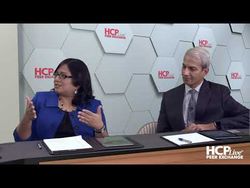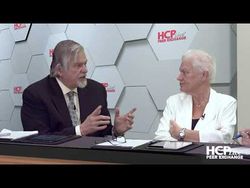Management of Beta Thalassemia - Episode 4
Impact of Beta Thalassemia on the Providers
Peter L. Salgo, MD: Let me ask you a question, because I’m not a pediatrician. I don’t deal with kids with disease. I respect all of you tremendously. How do you personally deal with that? How do you look at a young child, knowing about this horrible genetic defect, and then you soldier on? What effect does it have on you?
Maria Domenica-Cappellini, MD: I’m not a pediatrician, but I was dealing with my pediatric colleagues at that time, and I have to say that it was terribly painful also for a physician and the caregiver because of course at that time we couldn’t help too much. And going back to the era when iron chelation was not available even. So that was terrible. To tell parents and you know the child was very much protected by the family, by the physician, but it was a difficult time.
Now I am so happy. I say that I’m a grandma of many children from my β-thalassemia patients because now they can have their own family, they have their own children. So it is a different time.
Sujit Sheth, MD: Several things have really changed. So β-thalassemia has really graduated from being a pediatric disease to now being a predominantly adult disease, at least in the Western world.
Peter L. Salgo, MD: I want people to stop and think about that for a moment. What does that really say about medical progress? It’s amazing.
Sujit Sheth, MD: It is absolutely amazing. So it’s gone from being a potentially lethal disease to being a very cumbersome disease. It’s something that affects your quality of life. But you can still have a near-normal life expectancy if you are treated appropriately in an environment with appropriate resources.
Peter L. Salgo, MD: That is insane.
Sujit Sheth, MD: It is. And the other thing I should mention is that we lost about 50% of our patients to HIV in the ‘80s.
Peter L. Salgo, MD: I hear you.
Sujit Sheth, MD: And so the blood supply is so much safer. We have oral chelators. In the past it was a potentially lethal disease, because you never knew whether you were going to get hepatitis or HIV or some other infection, and you didn’t have an effective way of chelating that everyone would accept. So now those 2 things have made a tremendous difference.
Peter L. Salgo, MD: The hemophilia population was impacted too.
And I must say, as a pediatrician, it’s extremely helpful to me to have that other aspect to see what happens at the other end. And, of course, we have colleagues like Maria who can help us out. But I think that—you know, you made the comment on how do you deal with it as a pediatrician.
Peter L. Salgo, MD: Yes.
Thomas D. Coates, MD: I mean it’s terrific. I mean, Sheth’s agreeing with me.
Sujit Sheth, MD: Absolutely.
Thomas D. Coates, MD: I mean it’s a little bit like low-risk leukemia as well, you know, which we cure now. And so the family comes in devastated that they have this terrible disease and you can walk in with full confidence saying, “We know how to manage this. Your child will grow normally. They will go through puberty, we can protect them from all these problems, and, most likely they won’t spend the rest of their life with β-thalassemia because we’re going to ultimately cure them.”
You turned the table on my question. It isn’t terrible to be a pediatrician, it’s great. It’s great to deal with this.
Sujit Sheth, MD: I will offer a note to temper that. This is in the developed world.
Peter L. Salgo, MD: In the developing world it is still a terrible disease to have because you don’t have a regular blood supply. The blood supply is not necessarily safe. You don’t have access to chelators; they’re very expensive. And there the life expectancy is markedly reduced.
Thomas D. Coates, MD: This is a very important point, and I think the message we have to spread around is that it is possible to cure these patients, it is possible to change their quality of life, but there is a need for intervention in many countries.
Transcript edited for clarity.



